
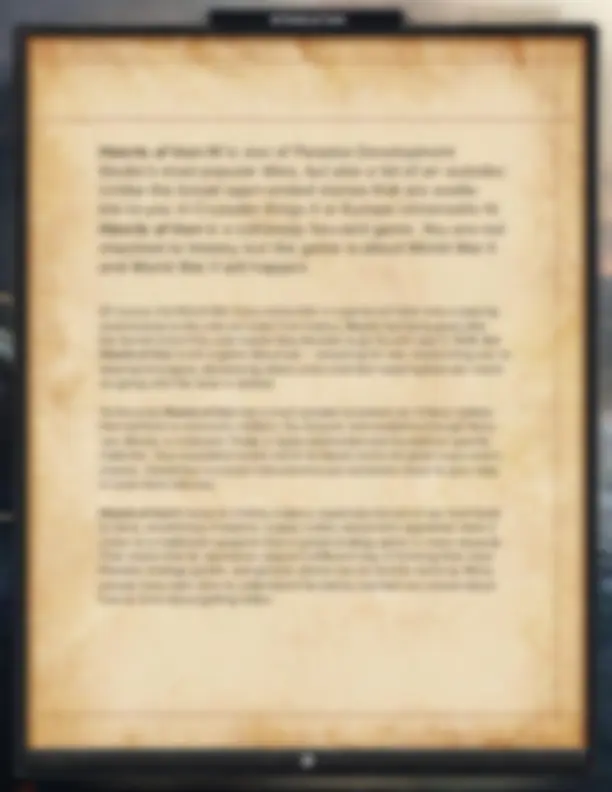
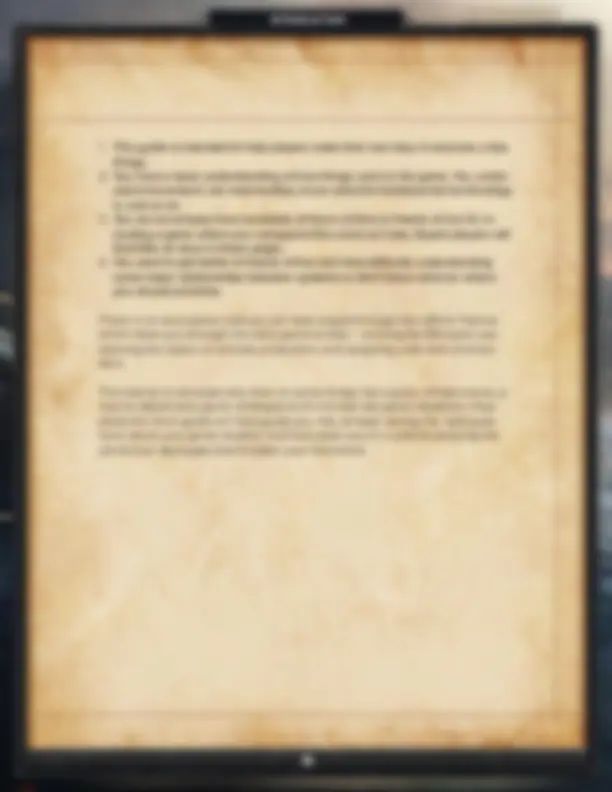
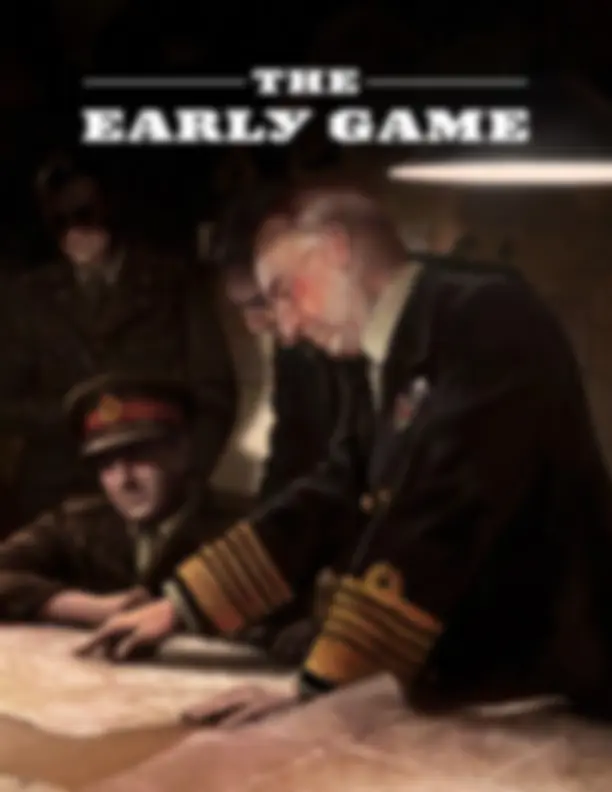
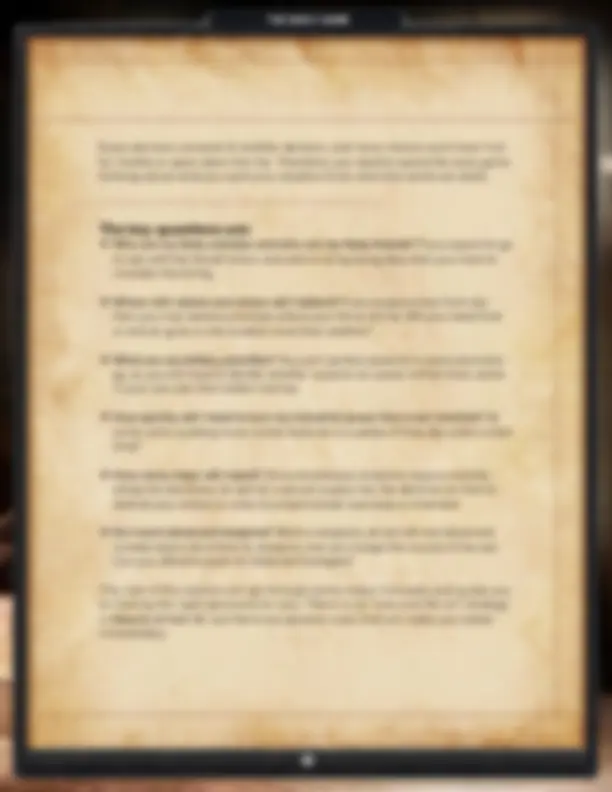
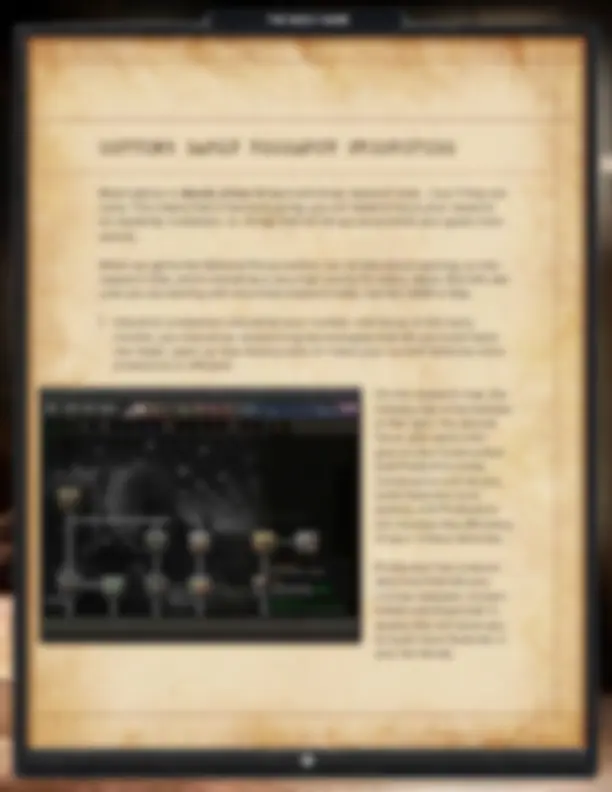
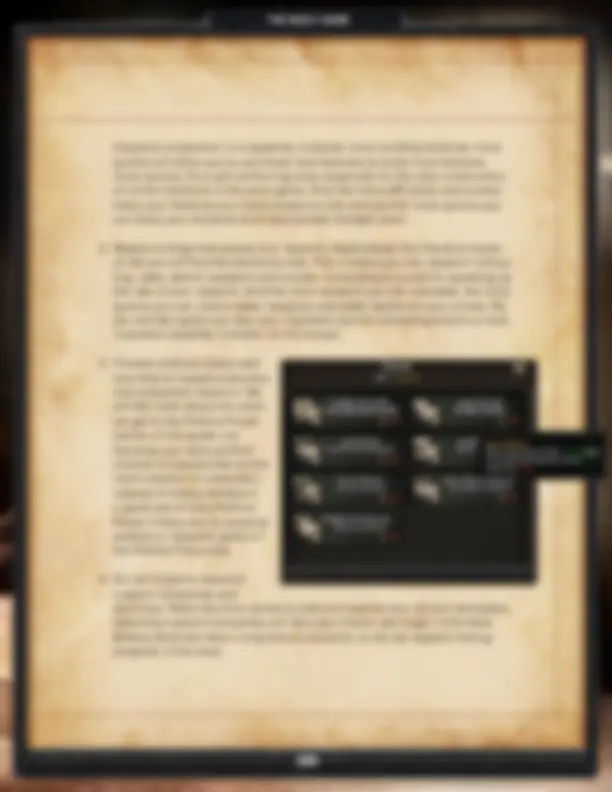
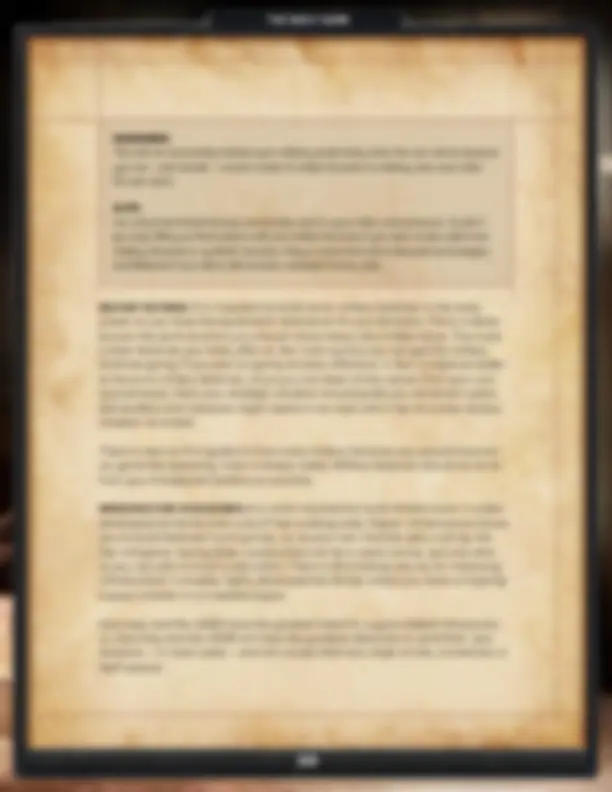
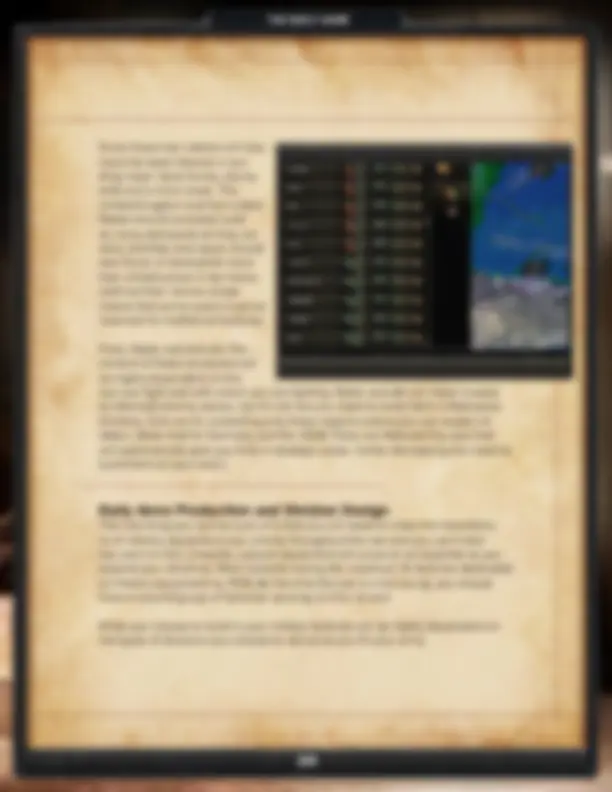
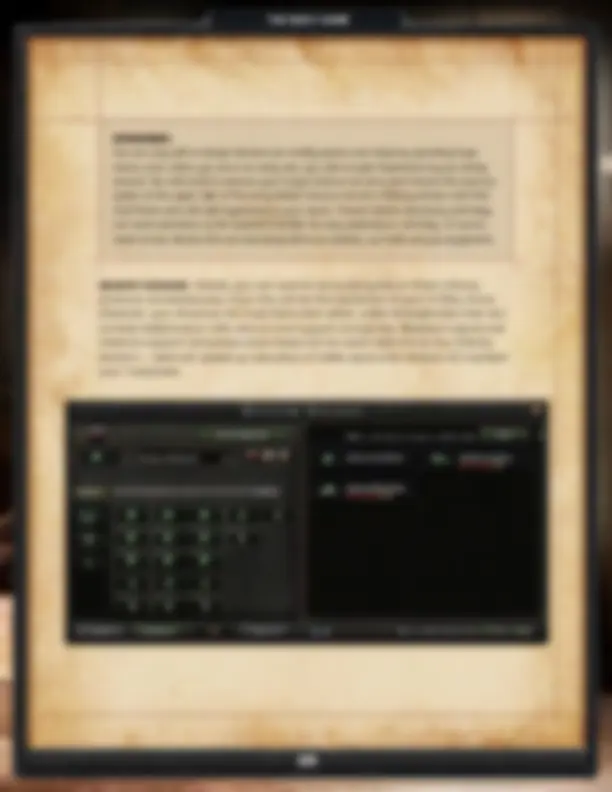
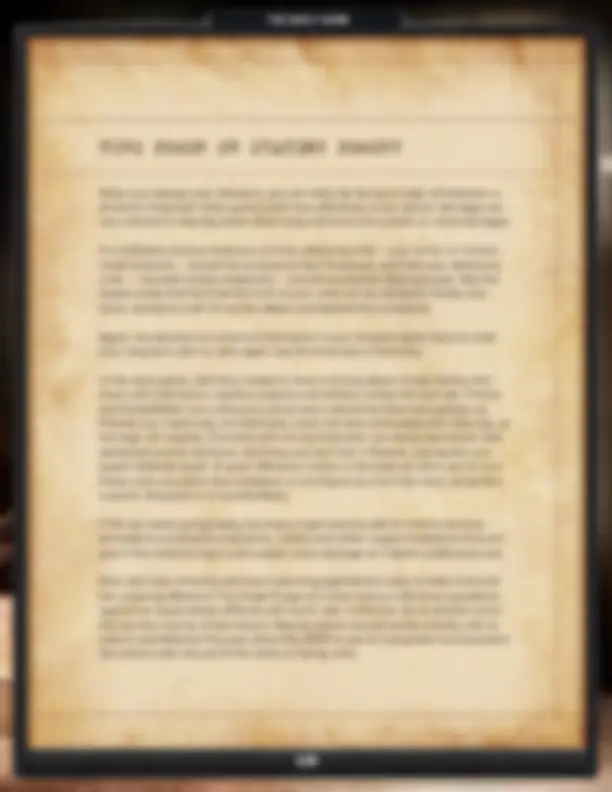
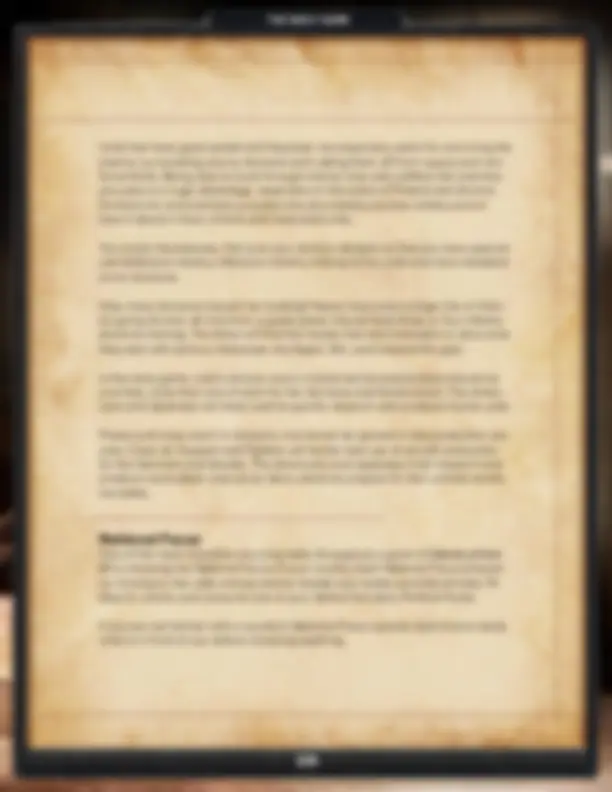
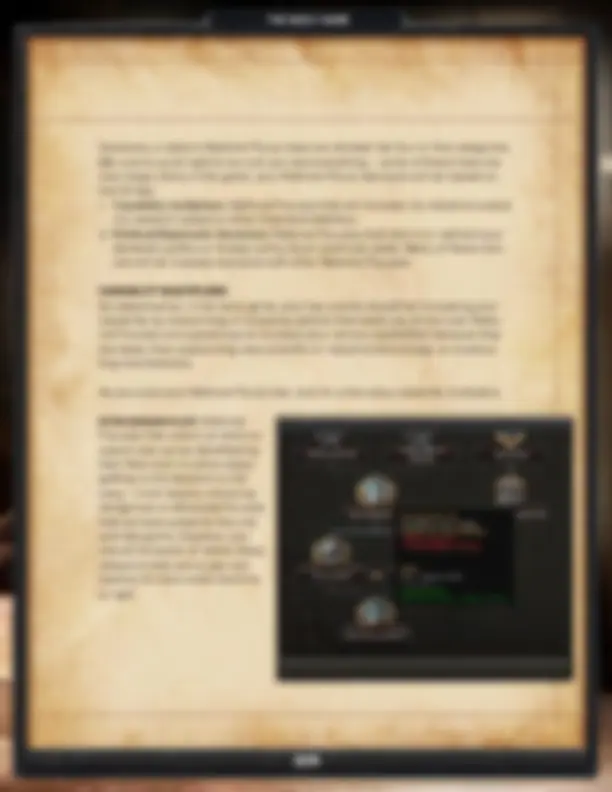
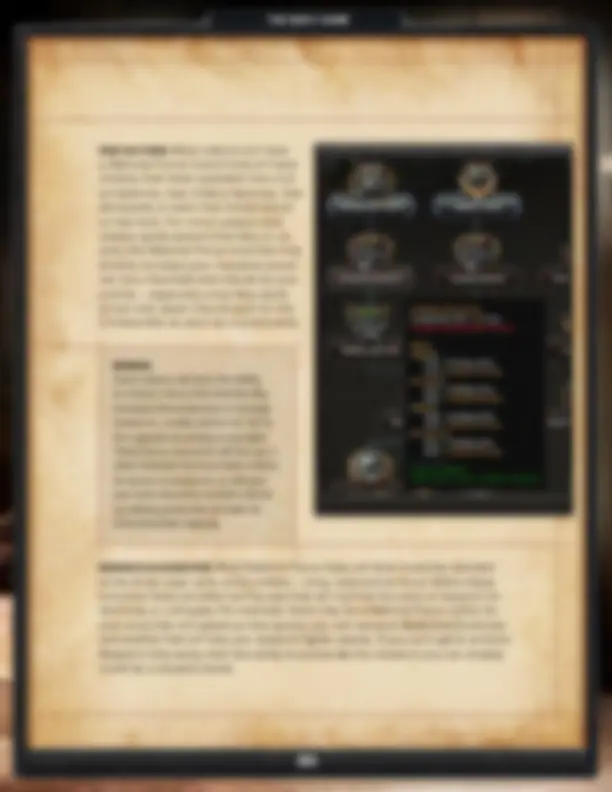
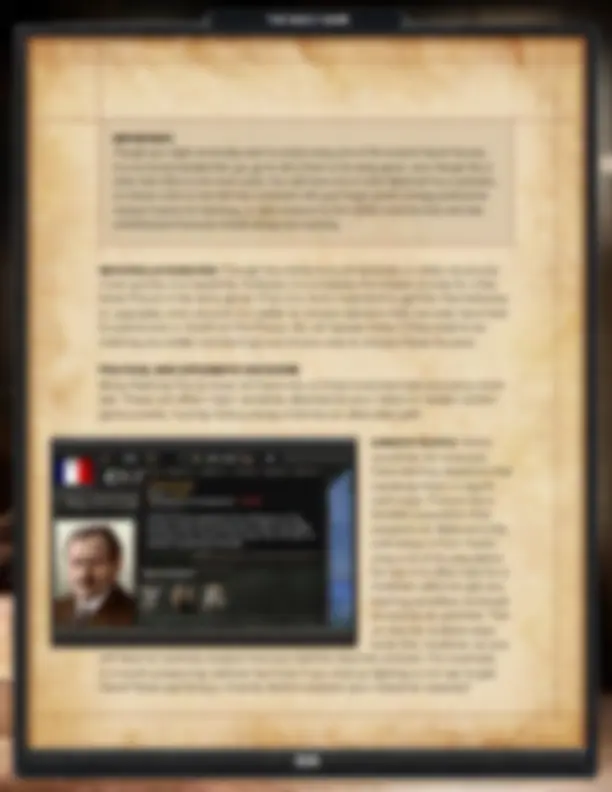
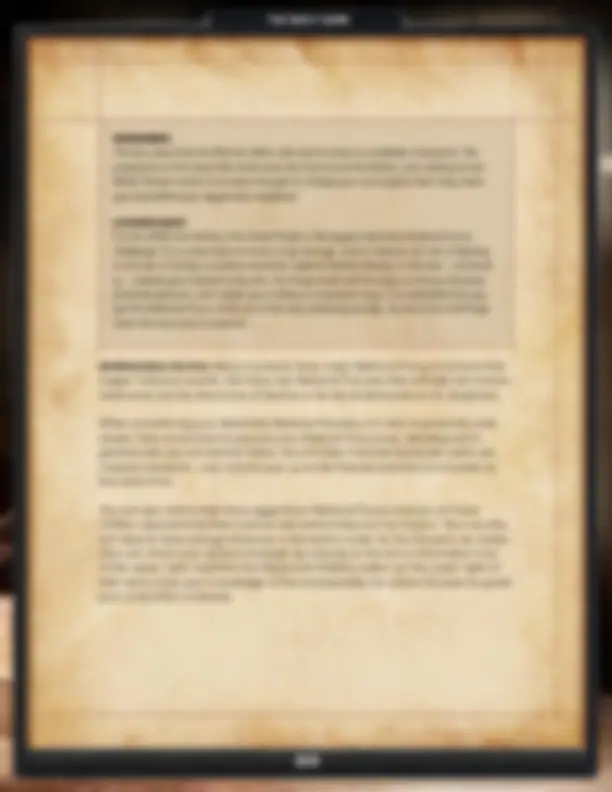
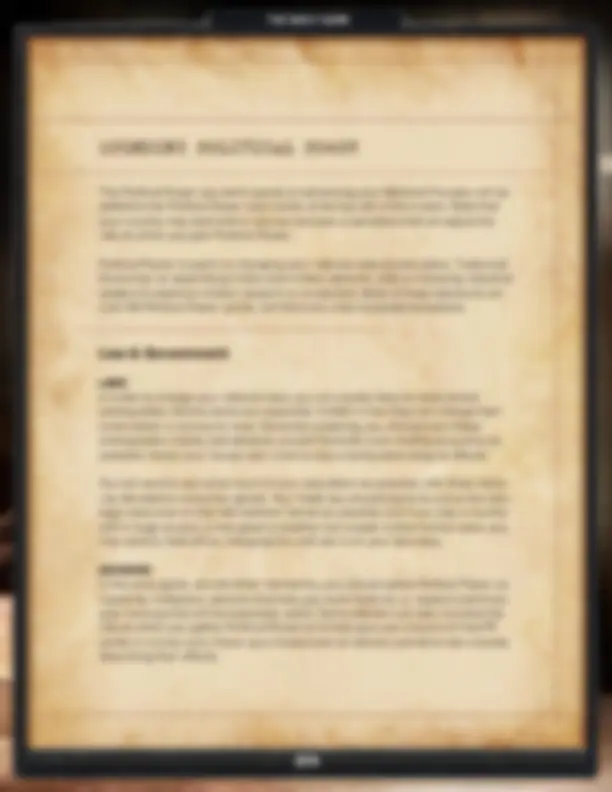
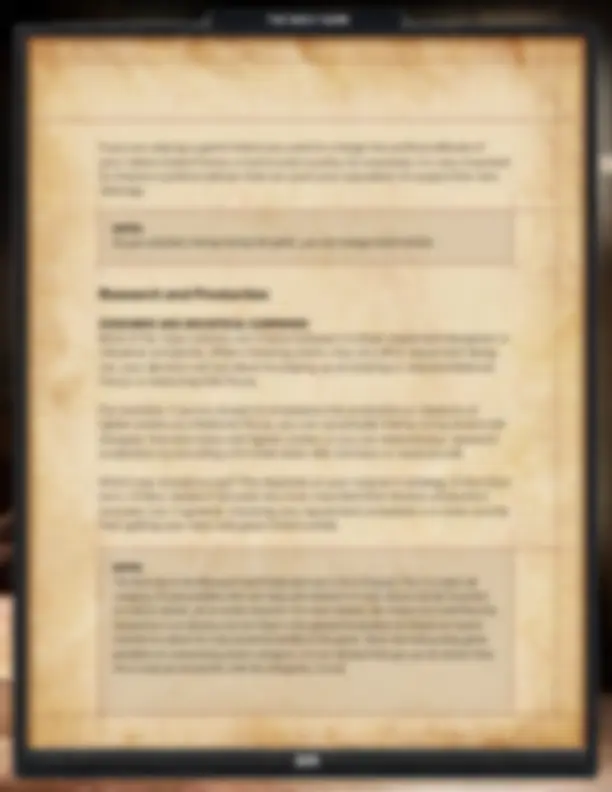
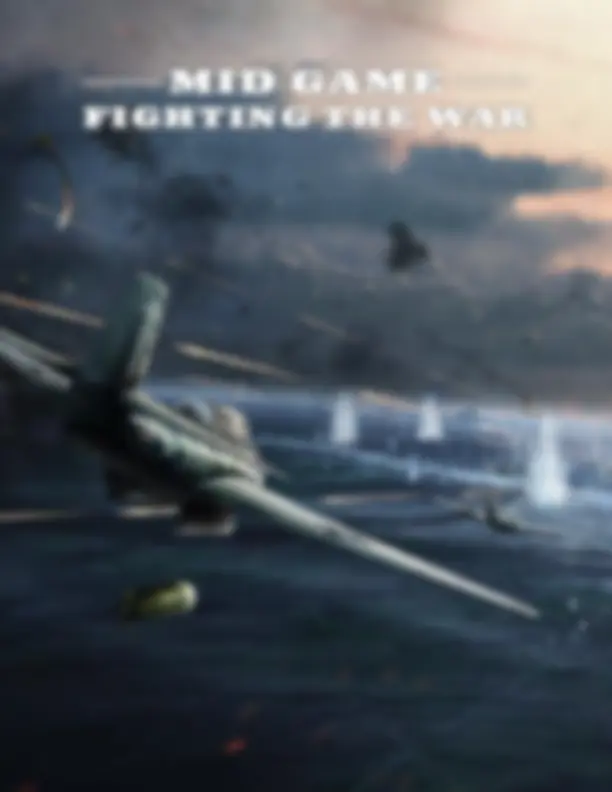
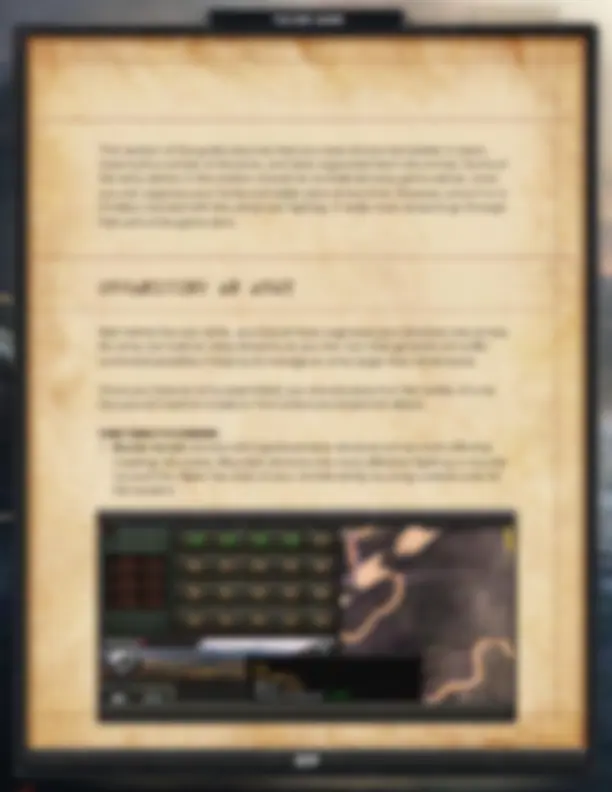
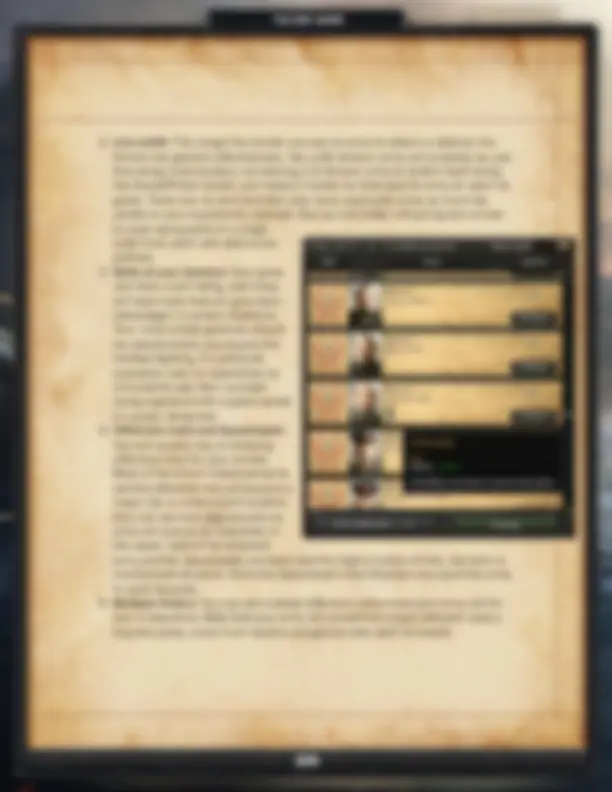
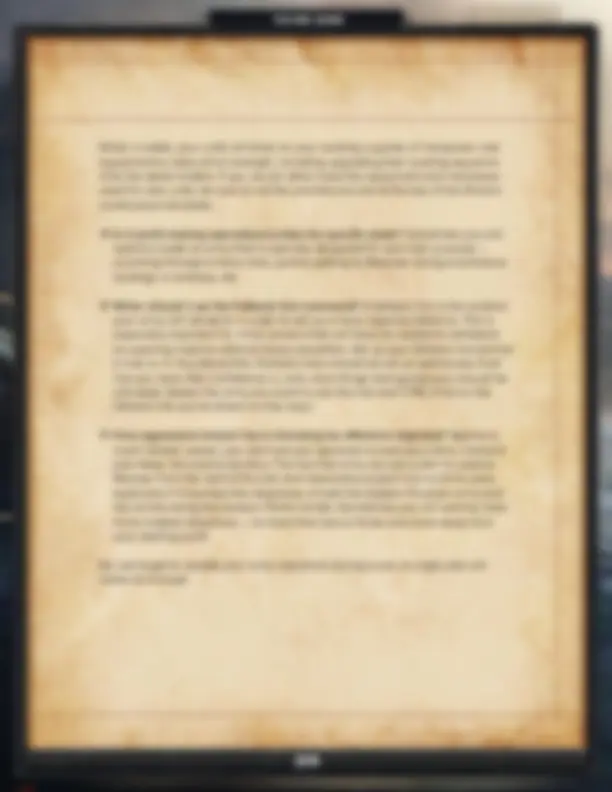
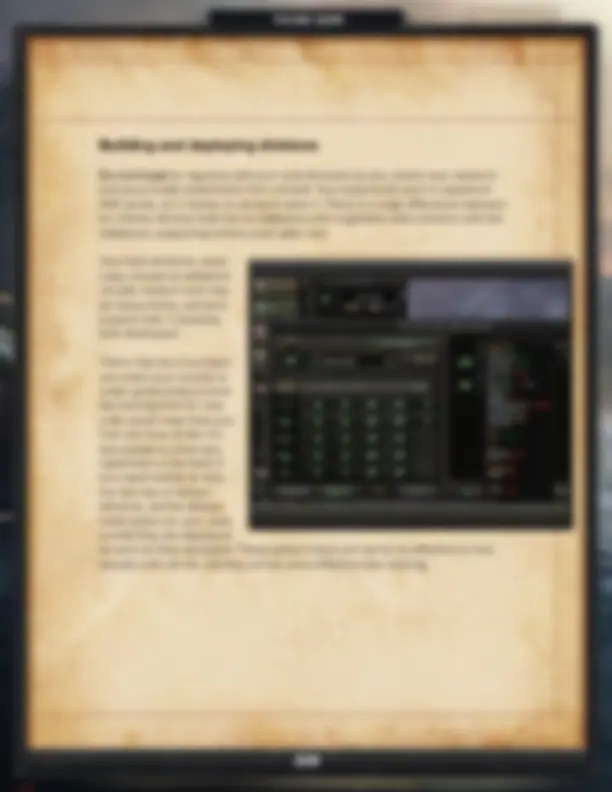
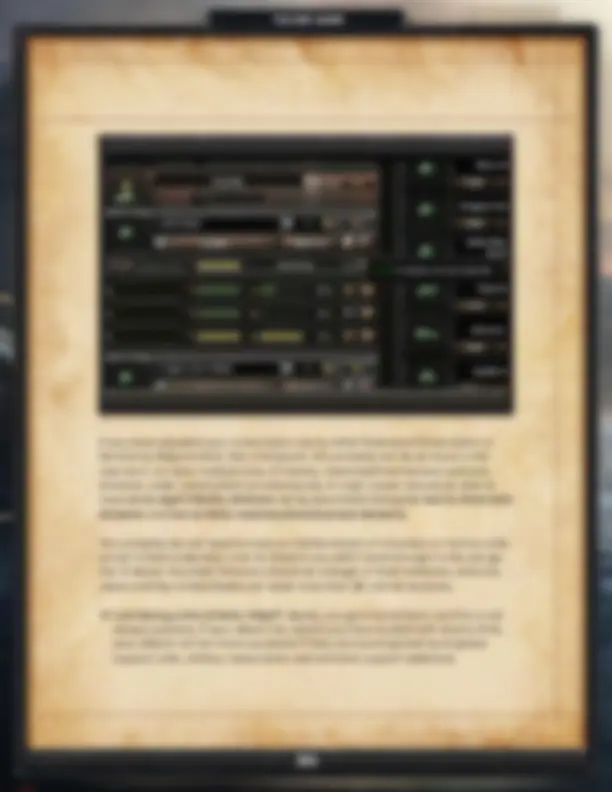
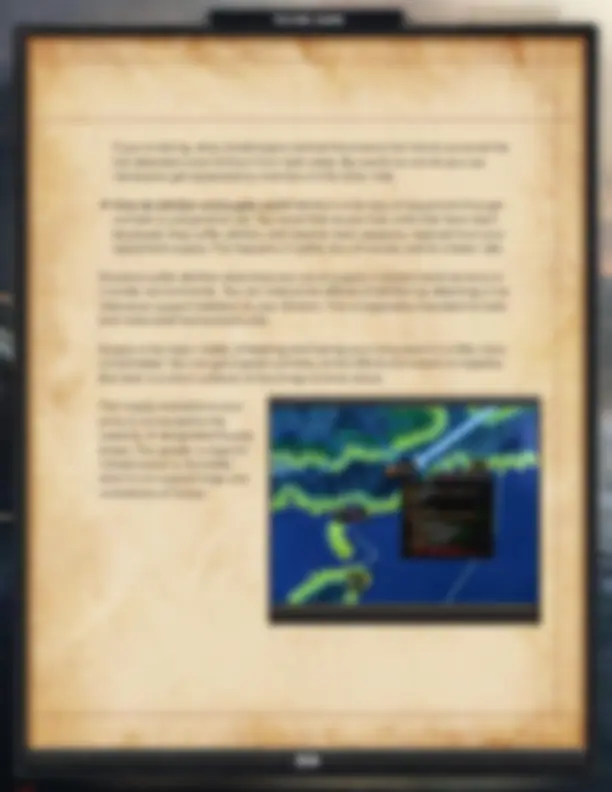
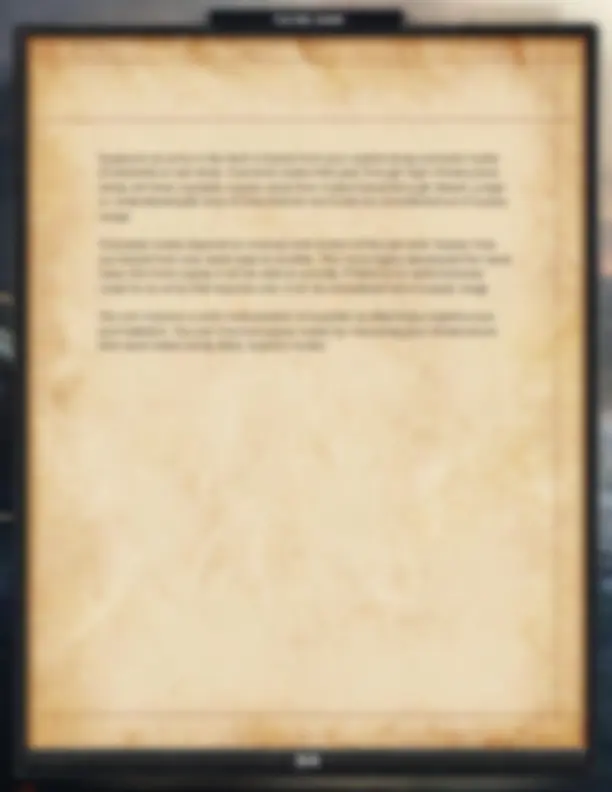

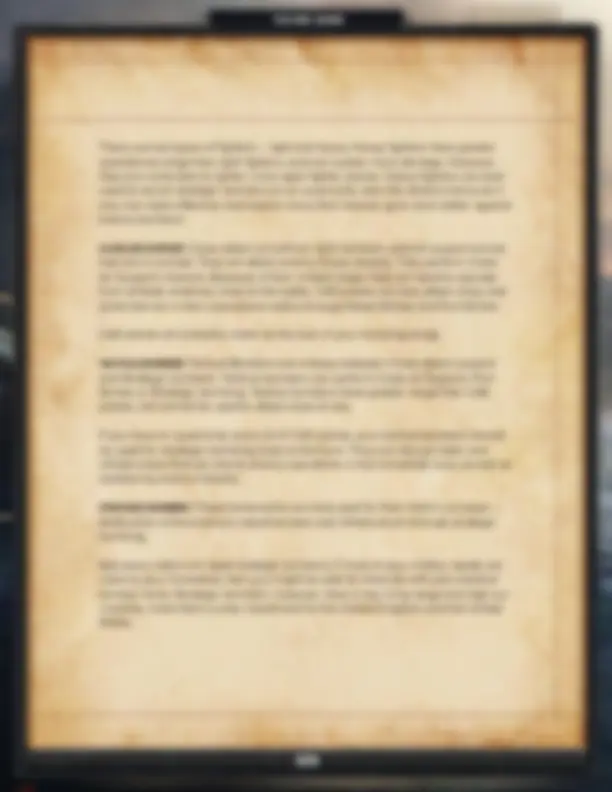
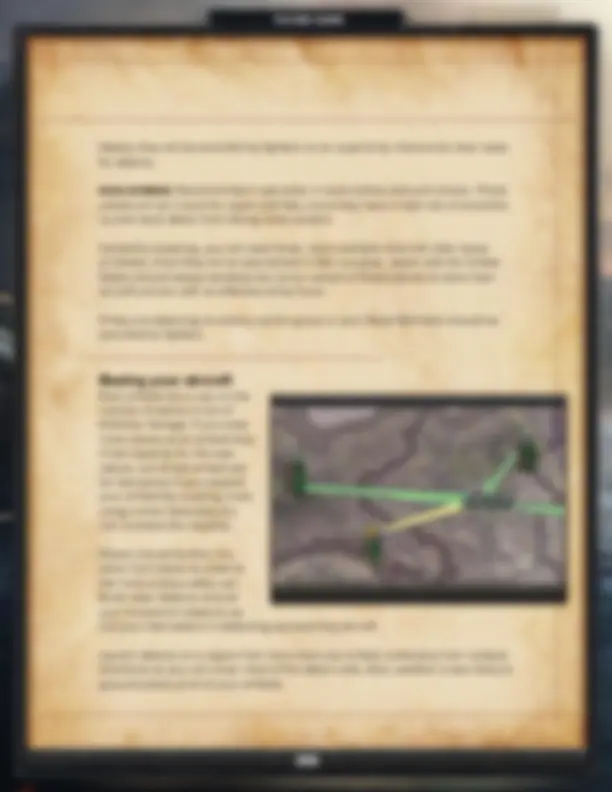
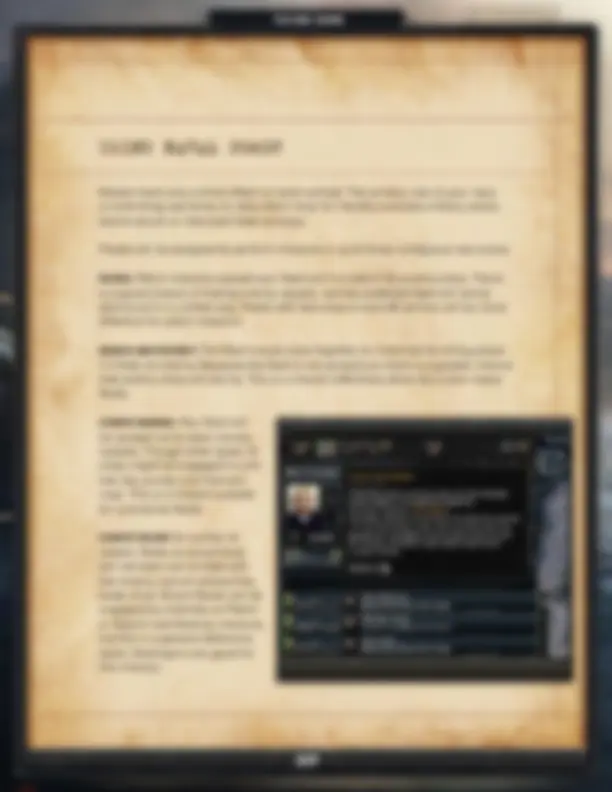
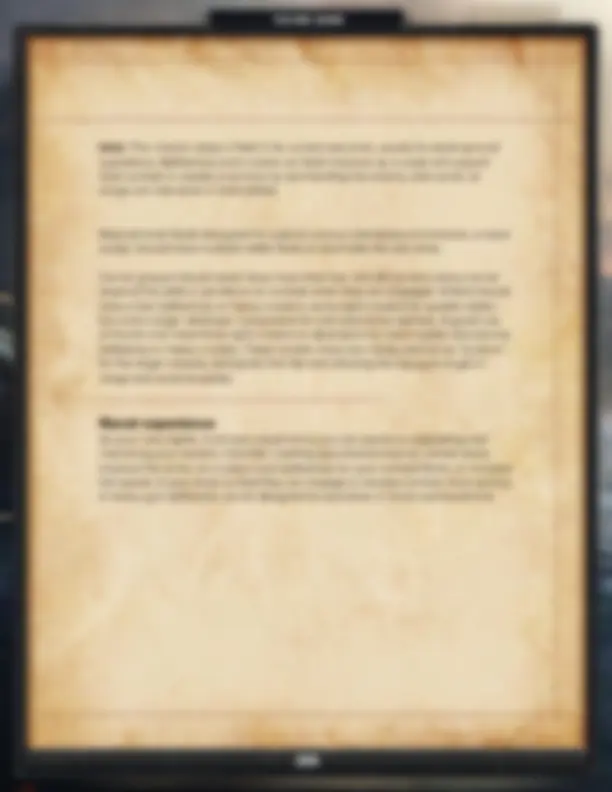
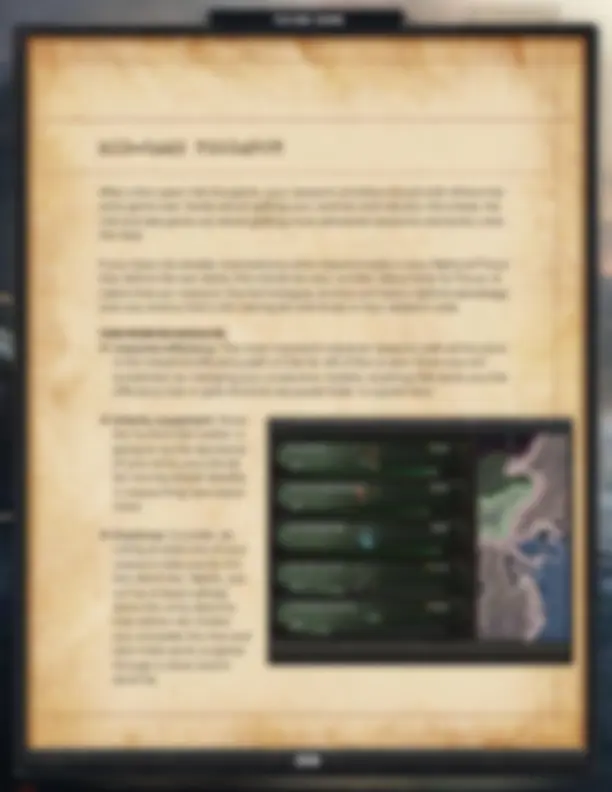
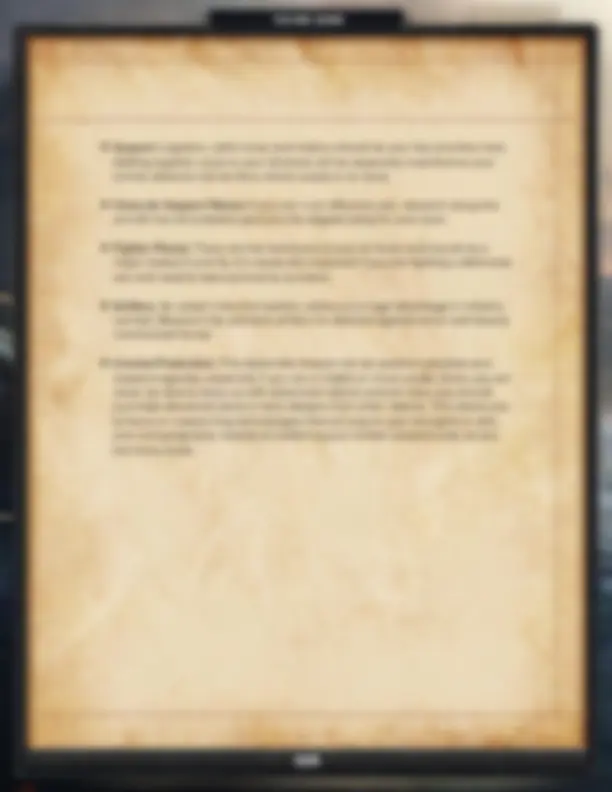
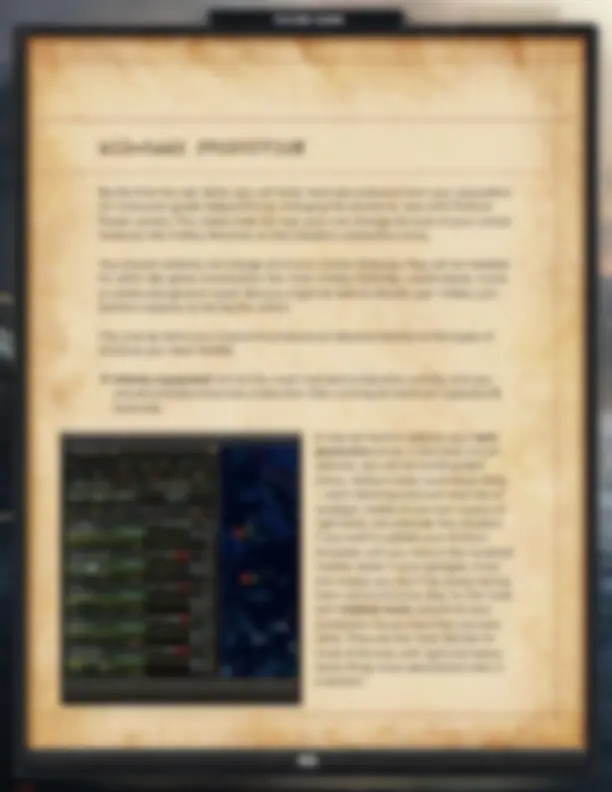
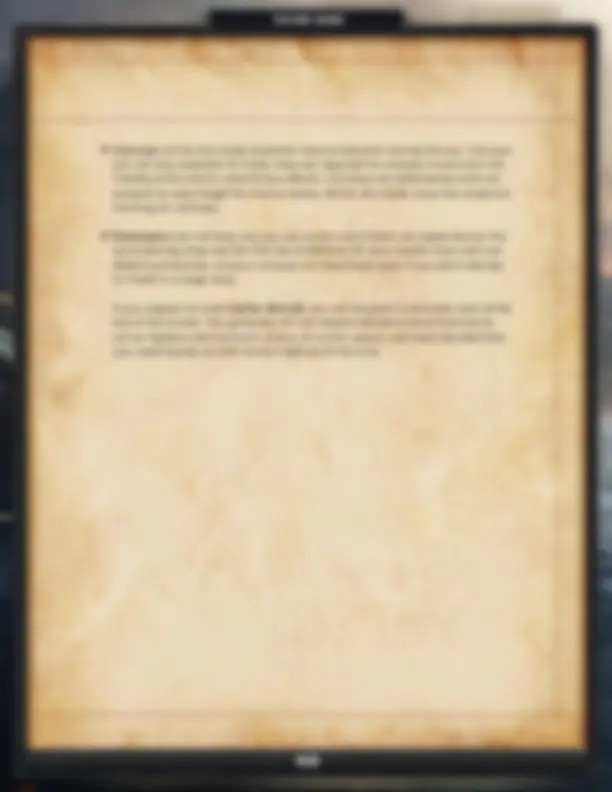
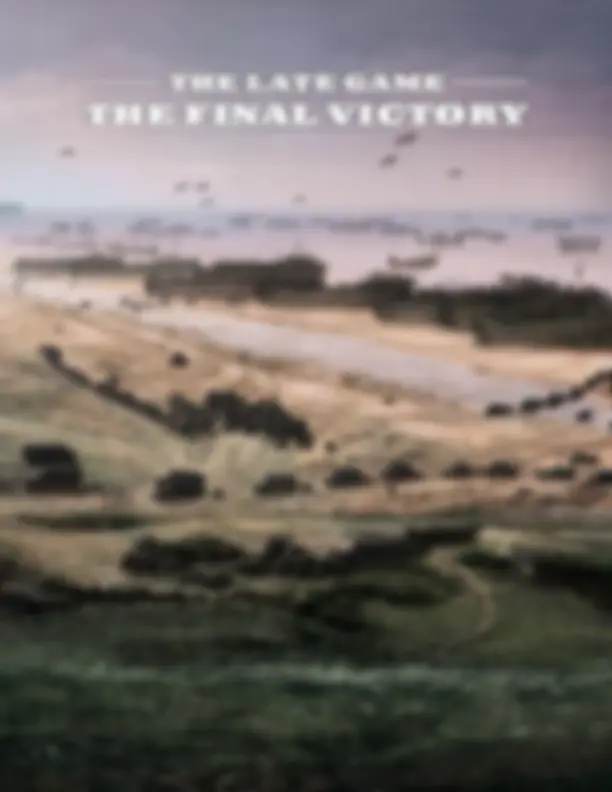
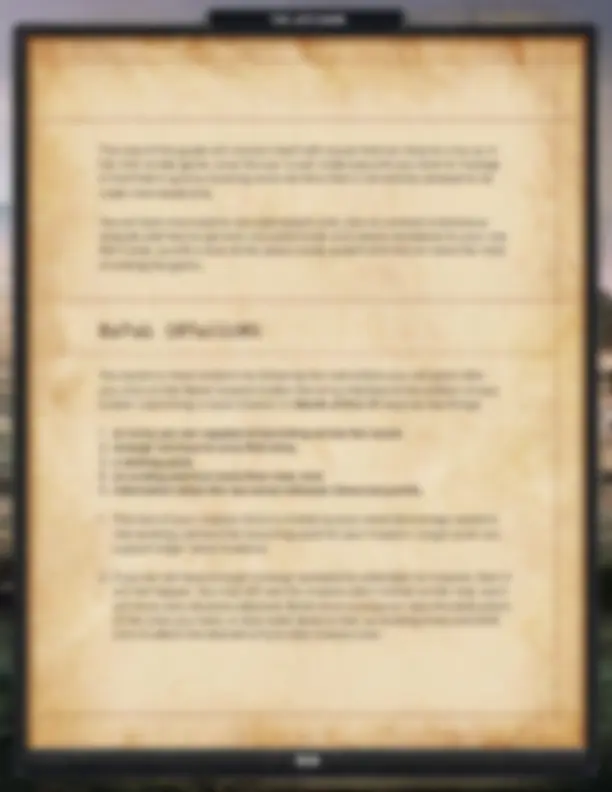
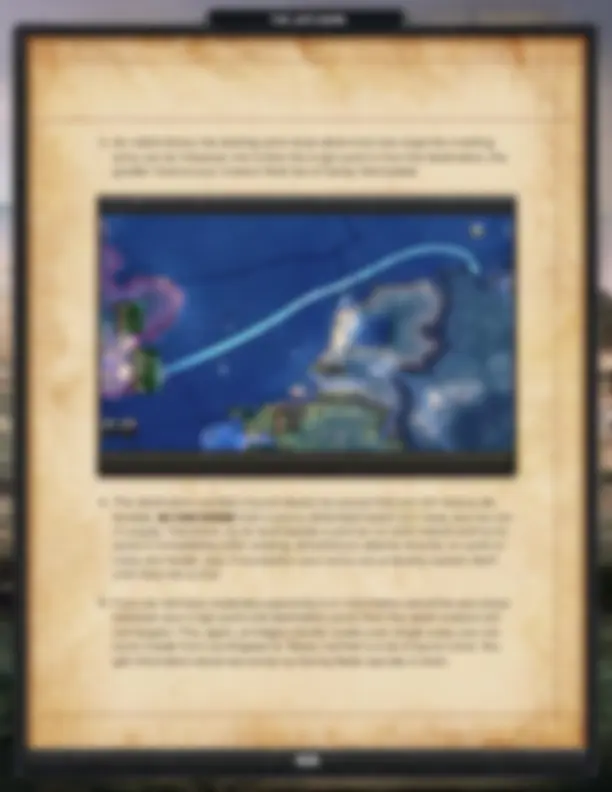
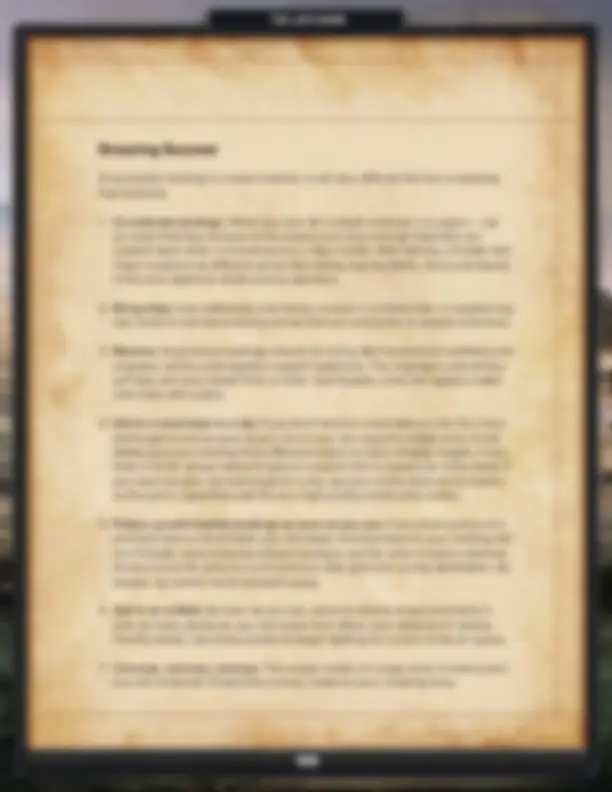
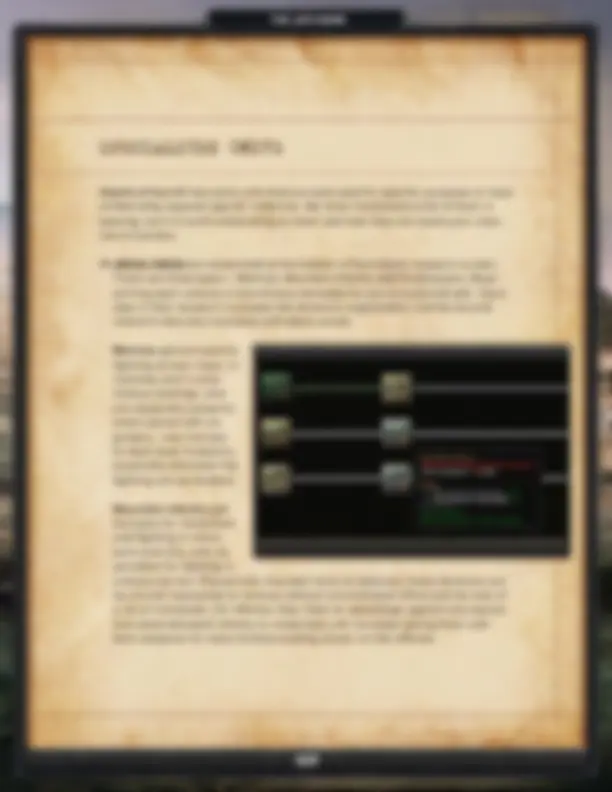
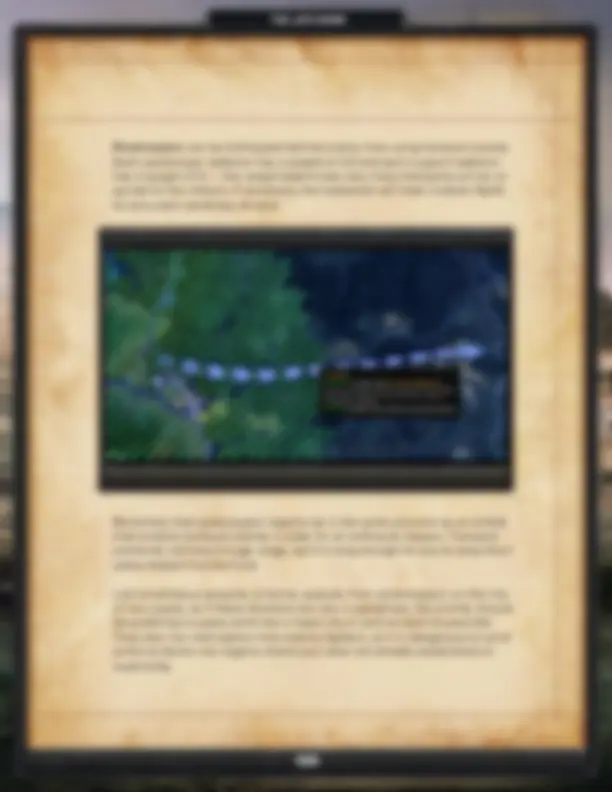
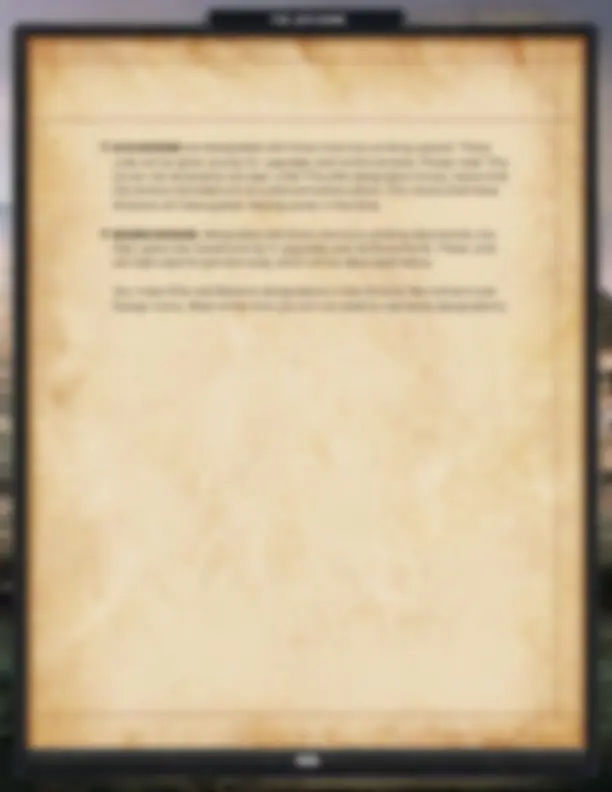
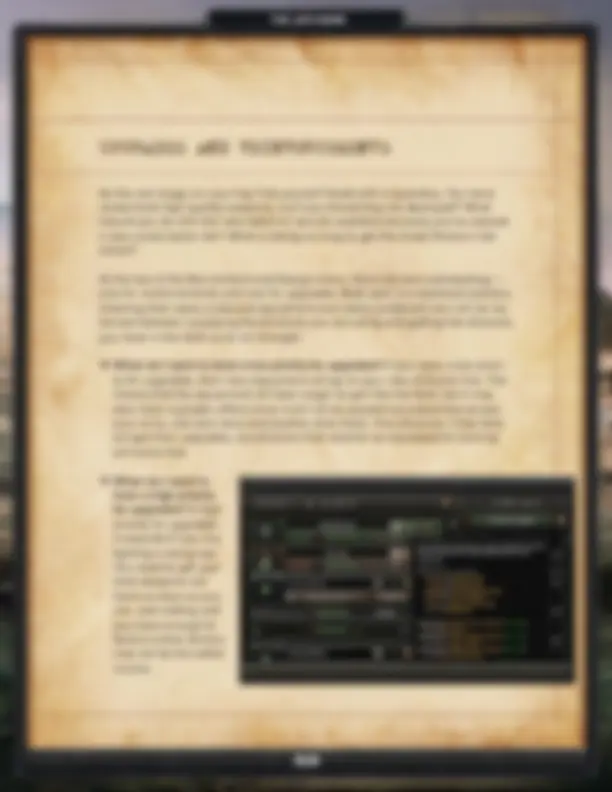
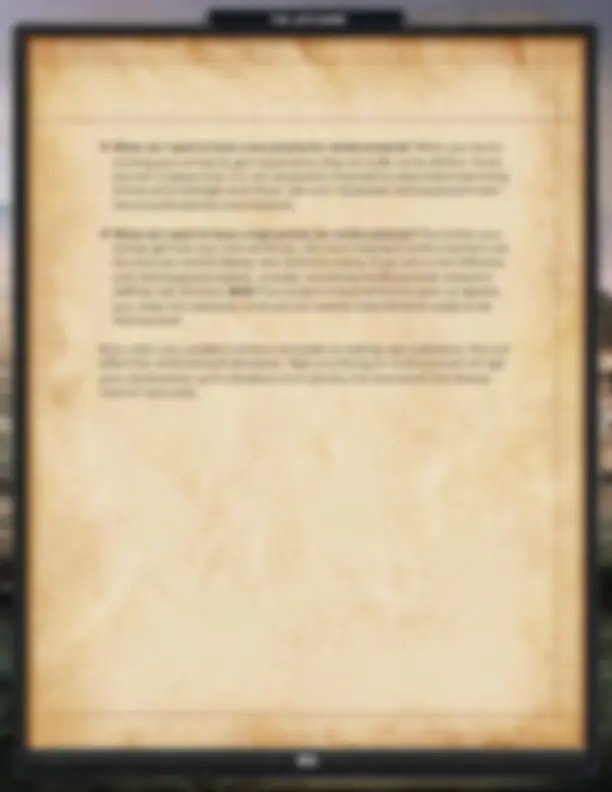
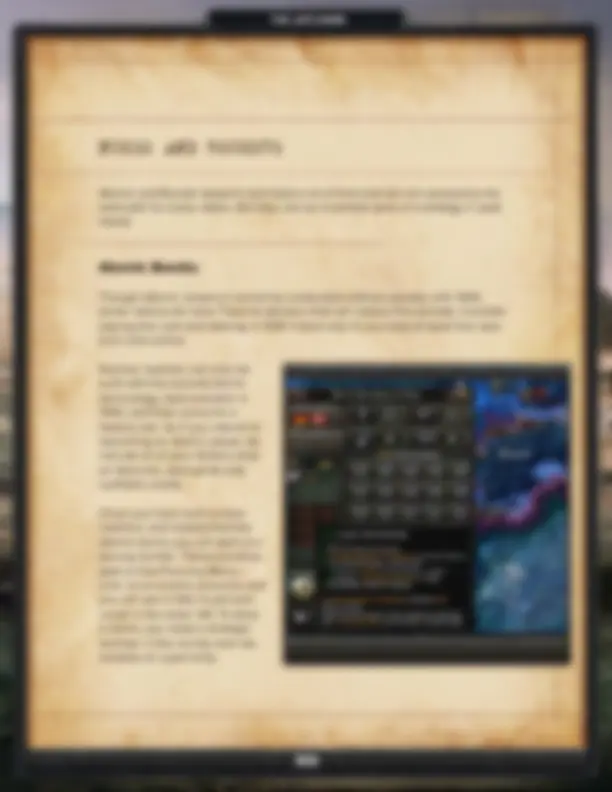

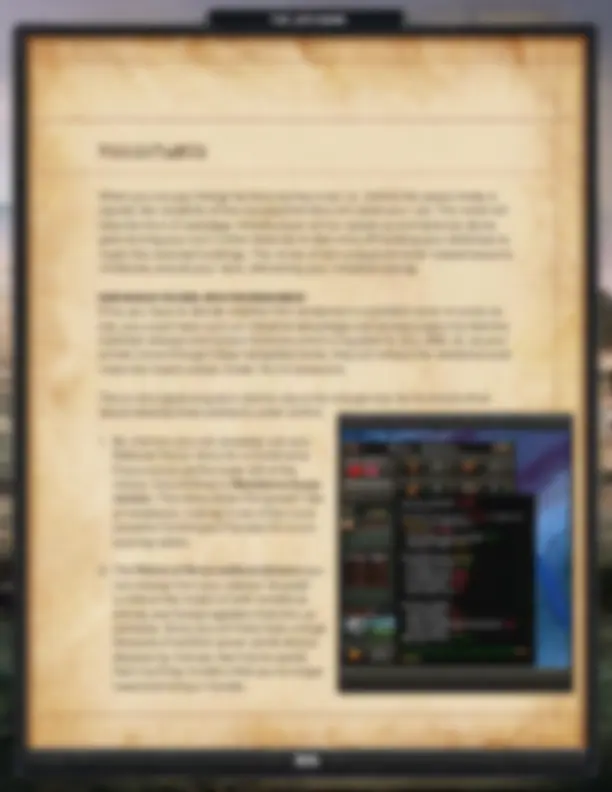
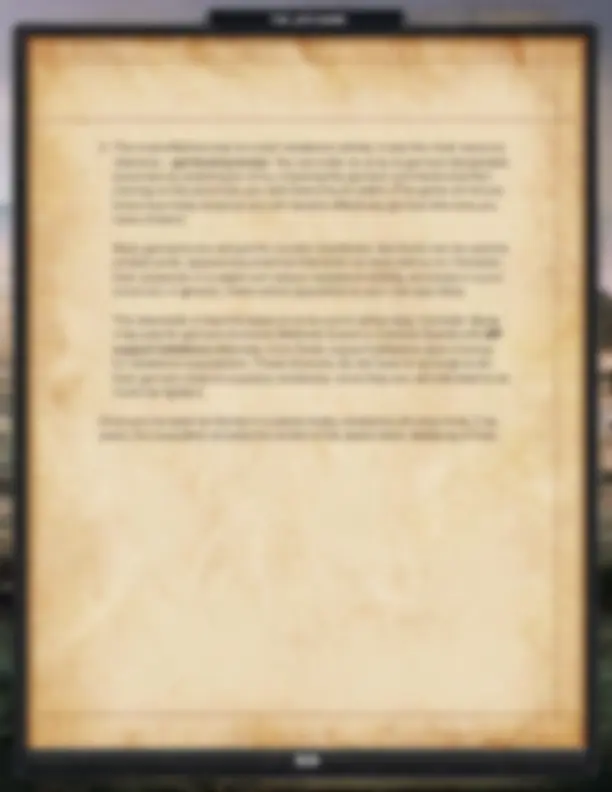
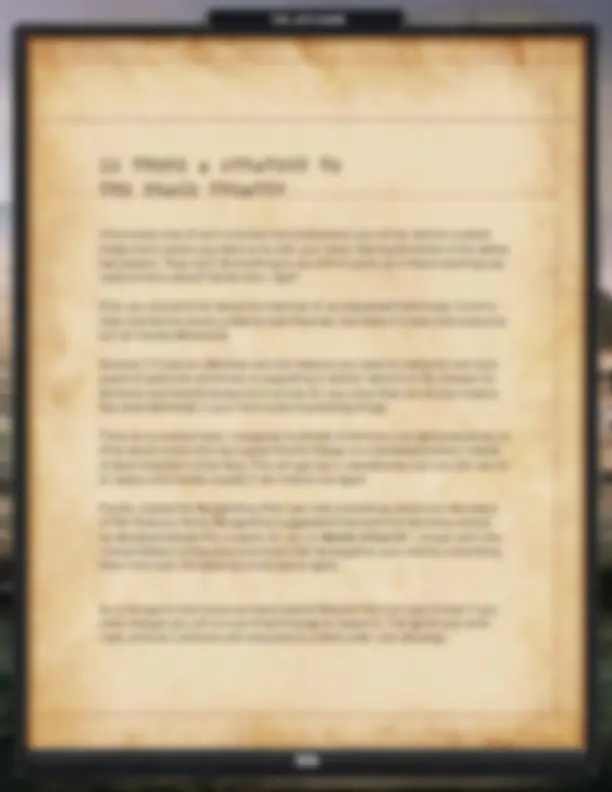
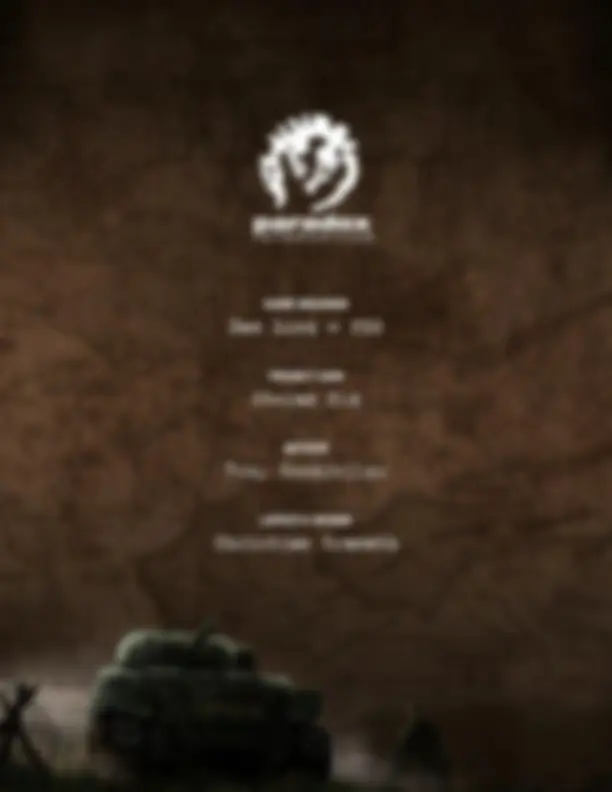


Study with the several resources on Docsity

Earn points by helping other students or get them with a premium plan


Prepare for your exams
Study with the several resources on Docsity

Earn points to download
Earn points by helping other students or get them with a premium plan
Community
Ask the community for help and clear up your study doubts
Discover the best universities in your country according to Docsity users
Free resources
Download our free guides on studying techniques, anxiety management strategies, and thesis advice from Docsity tutors
An early game strategy for Hearts of Iron IV, focusing on industrial production and military divisions. It covers the importance of capability multipliers, early civilian production, military factories, and division designs. The document also mentions the role of National Focuses and advisors in boosting production and research.
What you will learn
Typology: Study Guides, Projects, Research
1 / 57

This page cannot be seen from the preview
Don't miss anything!


















































INTRODUCTION
There is an assumption that you will have played through the official Tutorial, which takes you through the early game as Italy – winning the Ethiopian war, learning the basics of combat, production, and assigning units and comman- ders.
The tutorial is not especially clear on some things like supply, infrastructure, or how to adjust early game strategies to fit mid and late game situations. Hop- efully this short guide will help guide you into, at least, asking the right ques- tions about your game situation and help ease you on a path to stopping the pernicious ideologies that threaten your homeland.
WHAT IS YOUR PLAN? WHAT DO YOU WANT TO
ACCOMPLISH IN THIS GAME?
You want to win the war, obviously, but let’s break that down.
The early game of Hearts of Iron IV has very little true action unless you are playing Italy (starting at war in Ethiopia) or Japan (who will very quickly find itself in war in China). But, even here, the early game will be about setting the table for fighting the war on your terms.
Since war is inevitable, you need to think about how you will choose to fight it. There are the grand strategic considerations of where you want to fight and, if you can control it, when. But there are also the small strategic choices about what types of research to pursue and what types of production lines to focus on to get you to your larger strategic vision into place.
For example, germany starts the game with very few dockyards compared to France, the United Kingdom and the United States. Since odds are that the Roy- al Navy will be a great obstacle to any successful conquest of Great Britain or dominance in the Mediterranean, the German player will have to make early de- cisions about how to use those dockyards until more can be built or conquered.
Germany also has to import rubber and oil, so some of these precious dockyard slots will have to produce convoys to keep the resources flowing in case of a blockade. Challenging the Royal Navy with battleships or cruisers will take a lot of time, carrier research starts far behind other powers, and submarines are only moderately effective against large surface fleets.
But you cannot invade the United Kingdom across the English Channel without clearing some sort of a path for your armies.
Of course, if you follow the historical path of Germany and plan to strike out for Romania’s oil fields, or are able to invest in synthetics factories then maybe you won’t need as many convoys and can use those dockyards for something else.
Every decision connects to another decision, and many choices won’t bear fruit for months or years down the line. Therefore, you need to spend the early game thinking about what you want your situation to be when the world war starts.
✯ Who are my likely enemies and who are my likely friends? If you expect to go to war with the Soviet Union, and plan to bring along Italy, then you have to consider the timing.
✯ Where will I attack and where will I defend? If you expect a two front war, then you may need to prioritize where your focus will be. Will you need forts or anti-air guns in one location more than another?
✯ What are my military priorities? You can’t perfect research in every technolo- gy, so you will have to decide whether superior air power will be more useful in your war plan than better marines.
✯ How quickly will I need to turn my industrial power into a war machine? At some point, building more civilian factories is a waste of time. But when is that time?
✯ How many ships will I need? Since amphibious invasions require visibility along the sea lanes, as well as a secure supply line, the decision on how to defend your shores or when to project power overseas is important.
✯ Do I want advanced weapons? Atomic weapons, jet aircraft and advanced rockets take a lot of time to research, but can change the course of the war. Can you afford to push for these technologies?
The rest of this section will go through some major concepts and guide you to making the right decisions for you. There is no “one-size fits all” strategy in Hearts of Iron IV , but there are general rules that will make you better immediately.
Industrial production is a capability multiplier since building factories more quickly will allow you to use those new factories to build more factories more quickly. It’s a self-reinforcing loop, especially for the vital construction of civilian factories in the early game. And, the more efficiently and produc- tively your factories can make weapons and vehicles the more quickly you can keep your divisions at an appropriate strength level.
✯ Should I research advanced technologies even though there is a research penalty for moving too quickly? If you have a research bonus attached to a national focus or military/political advisor that will reduce the research penalty for looking at 1940 tech in 1937, then it does not hurt to take a chance so long as this is a technology you will be using while the advantage matters. Do not try this on more than one research slot at a time.
✯ What about atomic or rocket weapons? Can I look at that early? Atomic rese- arch is tempting, but also requires a lot of time and infrastructure to produce first the science and then the weapons. Probably only the USA, the USSR and Germany have the room for beginning this research in the 1930s.
✯ Should I research modified vehicles like tank destroyers or carrier aircraft? Japan and the United States will rely heavily on aircraft carriers to project power and so will have to have carrier versions of their warplanes. You will not need carrier versions of every upgrade, however. It might be OK to skip a generation. As for tank modifications, they are best seen as a mid-game rese- arch problem once you have an idea of what you are fighting against and only after you have your standard division templates in place.
✯ Is it ever good to change military doctrines? The major powers start with a military doctrine chosen for them based on their historical ten- dencies. If you do decide to change this, do it immediately – do not start research on one doctrine path and then change your mind.
✯ Should I research synthetic oil? Ja- pan, Germany and, to some extent, the USSR and Italy, will have to in- vest in synthetic oil research and the Axis must make this a priority early to prevent being cut off from rubber too soon.
MILITARY FACTORIES: It is important to build some military factories in the early phase so you have the equipment reserves to fill your divisions. There is deba- te over the point at which you should move heavy into military focus. The more civilian factories you have, after all, the more quickly you can get the military factories going. If you plan on going an early offensive, in fact, it might be better to focus on military factories, since you can steal civilian power from your con- quered areas. Here your strategic situation should guide you. American splen- did isolation and industrial might means it can wait until it has its civilian factory situation all sorted.
There is also no firm guide on how many military factories you should have sin- ce, generally speaking, more is always better. Military factories should be as far from your threatened borders as possible.
INFRASTRUCTURE VS DOCKYARDS: It is most important to build infrastructure in under- developed territories with a lot of free building slots. Higher infrastructure allows you to build factories more quickly, so, as your war machine gets moving into the mid-game, having faster construction will be a useful bonus, but only whe- re you can plan a lot of construction. There is diminishing returns for improving infrastructure in already highly developed territories unless you have a crippling supply problem in a crowded region.
Germany, and the USSR have the greatest need for supply related infrastructu- re. Germany and the USSR will have the greatest distances to send their new divisions – in most cases – and will usually field very large armies, sometimes in tight spaces.
REMEMBER. This will not necessarily hamper your military productivity when the war comes because you can – and should – convert a bulk of civilian factories to military ones soon after the war starts.
ALSO. You only have limited factory construction slots in your states and provinces. So don’t go crazy filling up those places with just civilian factories if you want to also add more military factories or synthetic factories. Keep in mind that some industrial technologies and National Focus ideas will increase available factory slots.
Since these two nations will also have the least interest in buil- ding major naval forces, docky- ards are a minor issue. The United Kingdom and the United States should probably build as many dockyards as they are able, and Italy and Japan should also focus on dockyards more than infrastructure in the home- land but their narrow shape means that some space must be reserved for traditional factories.
Forts, Radar and Anti-Air: Pla- cement of these structures will be highly dependent on the war you fight and with whom you are fighting. Radar and AA will make it easier to intercept enemy planes, but it’s not like you need to build them in Nebraska. Similarly, forts are for protecting only those regions where you can expect an attack. (Note that for Germany and the USSR, there are National Focuses that will automatically give you forts in strategic areas, further decreasing the need to build them on your own.)
The one thing you can be sure of is that you will need to make the manufactu- re of infantry equipment your priority throughout the war and you can’t start too soon on this. Likewise, support equipment will prove to be essential as you expand your divisions. Work towards having the maximum 15 factories dedicated to infantry equipment by 1938. By the time the war is in full swing, you should have a second group of factories working on this, as well.
What you choose to build in your military factories will be highly dependent on the types of divisions you choose to recruit as you fill your army.
Busting through enemy lines is a huge priority, so consider attaching a couple of artillery battalions – not just support companies – to add that extra firepower. If you have nine battalions in an infantry division, at least one should be an artillery battalion – two if you can support that production.
Add on additional infantry or motorized battalions when you can, especially if you have a large surplus of small arms.
ARMOR DIVISIONS: There is no need for most nations to be building cavalry divi- sions, so once you are able to build tanks, you should. Armor divisions can be tricky since you usually begin with only light tanks, and may want to upgrade these divisions as you unlock heavier armor. Also, armor divisions will definitely require mechanic support companies and, since they rely heavily on supply, a logistics support company to reduce supply based attrition.
Even once you have a lot of medium and heavy tanks, it might be worthwhile to keep a division template for light armor for those skirmishes against infantry focused minor nations. Producing light armor is also a much smaller drain on your resources than heavy armor. By the start of the war, however, your core armor di- vision template should be mostly medium armor with appropriate support compa- nies, a few heavy armor and maybe a tank destroyer if you have researched this.
WHAT TO DO WITH ARTILLERY: Artillery research is one of the things that is most easy to forget or neglect, but you should be attaching artillery to your motorized and infantry divisions. It is usually not worth making entire divisions for artille- ry, though you may want to create artillery battalions (not as support) for those types of divisions – especially since you are limited in the number of support companies you can attach to a division template.
KEY VALUES FOR DIVISIONS: You can see a full breakdown of the Hearts of Iron IV division statistics at the official wiki here: http://www.hoi4wiki.com/Land_warfare. The following values are probably the ones you should know about when you are building a division.
ORGANIZATION: This is a catch-all term for how combat ready your unit is and how long it can stay in the field before being forced to retreat. Organization is reduced during combat, and once it reaches zero, what re- mains of the unit must retreat.
✯ HP: Hit Points, i.e., the num- ber of “hits” a unit can take before it is destroyed. Each battalion contributes to the HP in a given division. Hit points correspond to lost manpower and equipment, and can only be replenished from supplies of each.
✯ Reconnaissance: The unit with the recon edge in a battle is more likely to choose suitable tactics during the engagement.
✯ Supply Use: How many supplies a unit consumes in a day. The larger a divi- sion, the more supplies it will eat up. Divisions that cannot be fully supplied will be less effective.
✯ Soft attack: The number of attacks per round made on an enemy’s “soft parts”, like infantry and support units.
✯ Hard attack: The number of attacks per round made on an enemy’s “hard parts”, like tanks or forts.
✯ Combat Width: The greater the combat width, the more attacks you can make against enemy divisions in a round of battle.
Units that have good speed and firepower are especially useful for encircling the enemy; surrounding enemy divisions and cutting them off from supply and rein- forcements. Being able to burst through enemy lines and outflank the enemies you pass is a huge advantage, especially on the plains of Poland and Ukraine. Divisions for encirclement purposes should probably eschew artillery (which slow it down) in favor of tank and motorized units.
You could, theoretically, fine tune your division designs so that you have speciali- zed defensive infantry, offensive infantry, blitzing armor units and more standard armor divisions.
How many divisions should I be building? Never have only a single line of infan- try going at once. At minimum, a great power should have three or four infantry divisions training. The Allies will find this harder than the Comintern or Axis since they start with serious manpower shortages. Still, work toward this goal.
In the early game, a tank division and a mobile/mechanized division should be priorities, more than one of each for the Germans and Soviet Union. The Ameri- cans and Japanese will likely want to quickly research and produce marine units.
Planes and ships aren’t in divisions, but cannot be ignored in the production pro- cess. Close Air Support and Fighters will be the best use of aircraft production for the Germans and Soviets. The Americans and Japanese must research and produce naval attack and carrier deck planes to prepare for their almost inevita- ble battle.
One of the most important recurring tasks throughout a game of Hearts of Iron IV is choosing the National Focus of your country. Each National Focus (chosen by clicking on the wide bronze banner beside your leader portrait) will take 70 days to unlock, and consume one of your default two daily Political Points.
If you are not familiar with a country’s National Focus options, take time to study what is in front of you before choosing anything.
Generally, a nation’s National Focus trees are divided into four or five categories. (Be sure to scroll right to be sure you see everything – some of these trees are very large.). Early in the game, your National Focus decisions will be based on two things:
As stated earlier, in the early game, your top priority should be increasing your capability by researching or choosing options that assist you at low cost. Natio- nal Focuses are a great way to increase your various capabilities because they are faster than researching new scientific or industrial technology, or construc- ting new factories.
As you scan your National Focus tree, look for a few easy capability multipliers.
EXTRA RESEARCH SLOT: National Focuses that unlock an extra re- search slot can be identified by their flask icon. In some cases, getting to this decision is not easy – it will require unlocking dangerous or advanced focuses that are best suited for the mid and late game. However, you should be aware of where these research slots are so you can beeline for them when the time is right.